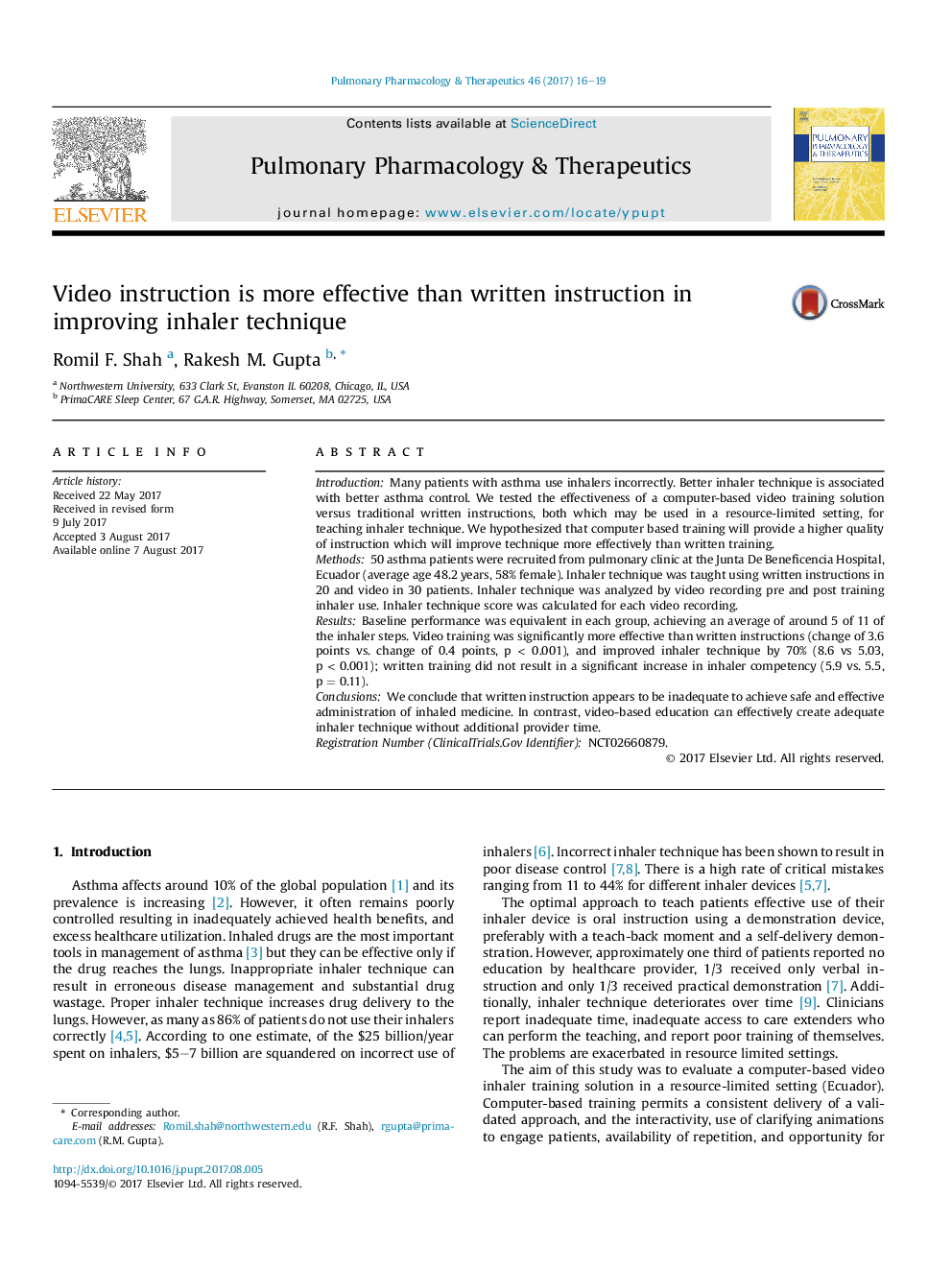| Article ID | Journal | Published Year | Pages | File Type |
|---|---|---|---|---|
| 5558124 | Pulmonary Pharmacology & Therapeutics | 2017 | 4 Pages |
IntroductionMany patients with asthma use inhalers incorrectly. Better inhaler technique is associated with better asthma control. We tested the effectiveness of a computer-based video training solution versus traditional written instructions, both which may be used in a resource-limited setting, for teaching inhaler technique. We hypothesized that computer based training will provide a higher quality of instruction which will improve technique more effectively than written training.Methods50 asthma patients were recruited from pulmonary clinic at the Junta De Beneficencia Hospital, Ecuador (average age 48.2 years, 58% female). Inhaler technique was taught using written instructions in 20 and video in 30 patients. Inhaler technique was analyzed by video recording pre and post training inhaler use. Inhaler technique score was calculated for each video recording.ResultsBaseline performance was equivalent in each group, achieving an average of around 5 of 11 of the inhaler steps. Video training was significantly more effective than written instructions (change of 3.6 points vs. change of 0.4 points, p < 0.001), and improved inhaler technique by 70% (8.6 vs 5.03, p < 0.001); written training did not result in a significant increase in inhaler competency (5.9 vs. 5.5, p = 0.11).ConclusionsWe conclude that written instruction appears to be inadequate to achieve safe and effective administration of inhaled medicine. In contrast, video-based education can effectively create adequate inhaler technique without additional provider time.Registration Number (ClinicalTrials.Gov Identifier)NCT02660879.
